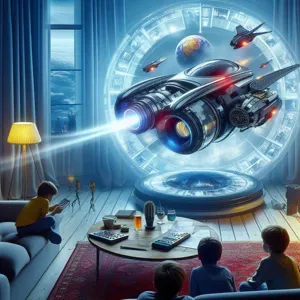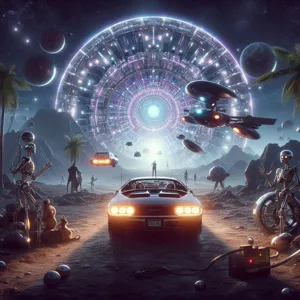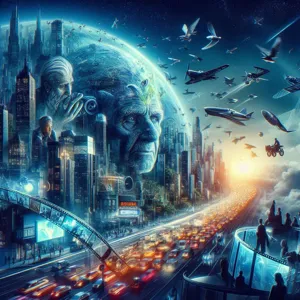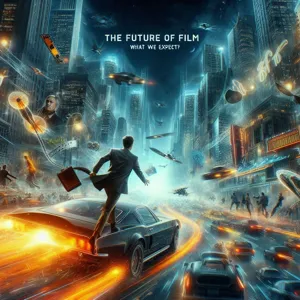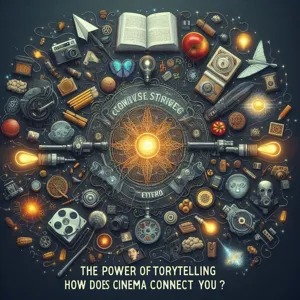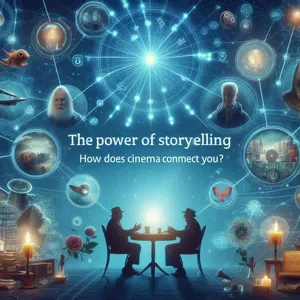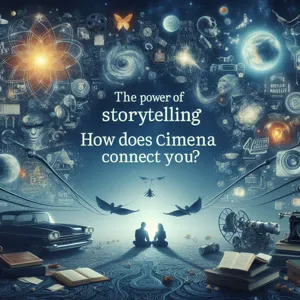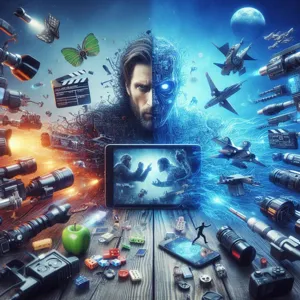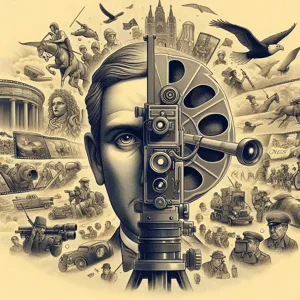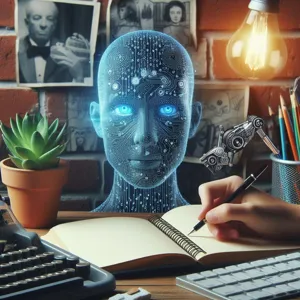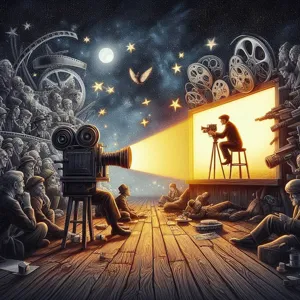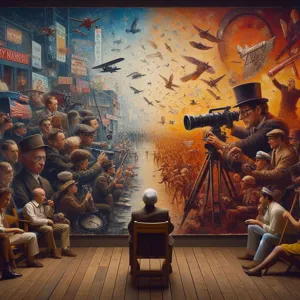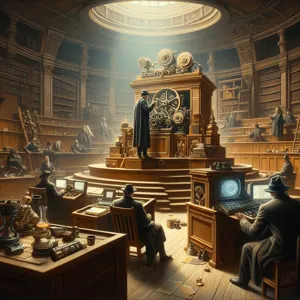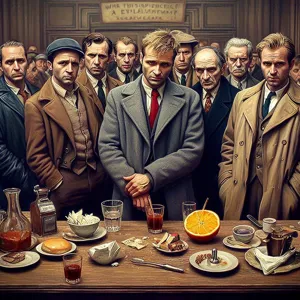Film is more than just a form of entertainment; it is a powerful medium that shapes our perceptions, beliefs, and understanding of the world around us.
From the sweeping landscapes of epic dramas to the intimate portrayals of everyday life in independent films, the cinematic experience influences how we interpret reality, often blurring the lines between fact and fiction. As we immerse ourselves in the narratives crafted by filmmakers, we begin to see the world through their unique lenses, which can challenge our viewpoints, evoke empathy, and provoke thought. In this blog post, we will explore the profound impact of film on our collective consciousness, examining how storytelling, cinematography, and character development not only reflect societal norms but also inspire change. Join us as we delve into the intricate relationship between film and reality, and discover how what we see on screen can shape our understanding of the world off-screen.
1. Introduction: The Power of Film in Shaping Perceptions
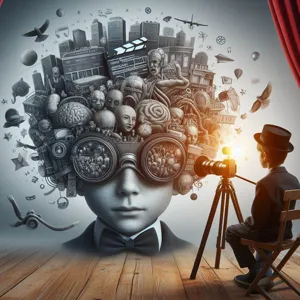
Film is more than just a form of entertainment; it is a powerful medium that shapes our understanding of the world around us. From the flickering images on a silver screen to the immersive narratives that pull us into different lives, films have the unique ability to influence our perceptions, beliefs, and emotions. Whether it’s a heartwarming story of resilience, a captivating documentary revealing hidden truths, or a thought-provoking drama tackling complex social issues, each frame can create a lasting impact on our consciousness.
In this digital age, where information is abundant and attention spans are fleeting, film stands out as a compelling vehicle for storytelling that transcends language and cultural barriers. It invites viewers into diverse perspectives, offering insights into the human experience that might otherwise remain unexplored. Through the lens of a camera, filmmakers capture not only moments but also the nuances of life, reflecting societal norms, challenging stereotypes, and evoking empathy.
As we delve deeper into the interplay between film and reality, we will explore how cinematic storytelling can shape our values, influence our opinions, and even alter our behavior. From the portrayal of gender roles to the representation of marginalized communities, film has the potential to reinforce or challenge existing perceptions. Join us as we embark on a journey through the lens, examining the profound ways in which film shapes our understanding of ourselves and the world we inhabit.
2. The Psychological Impact of Film on Audience Perception
Film is not just a medium of entertainment; it serves as a powerful tool that shapes our perception of reality in profound ways. The psychological impact of film on audience perception is a dynamic interplay of emotions, cognitive processes, and social influences. From the moment the lights dim and the screen ignites with vibrant imagery, viewers are drawn into a world that can alter their thoughts, feelings, and attitudes.
One of the most significant aspects of this impact lies in the way films evoke empathy. When audiences connect with characters on screen, they often experience a shift in their emotional landscape. A well-crafted narrative can make us walk in someone else’s shoes, understanding their struggles and triumphs. This emotional immersion can challenge our preconceived notions, broaden our horizons, and foster a sense of compassion for experiences vastly different from our own.
Moreover, films have the power to reinforce or challenge societal norms. By portraying various cultures, lifestyles, and ideologies, they can influence our beliefs and values. For instance, a film that highlights issues of social justice can awaken a sense of activism in viewers, prompting them to reflect on their role in society and inspiring them to effect change. Conversely, films that perpetuate stereotypes can entrench existing biases, shaping negative perceptions that linger long after the credits roll.
The visual and auditory elements of film further enhance its psychological influence. The use of music, lighting, and cinematography can create a visceral experience that amplifies emotions. A suspenseful score can raise anxiety levels, while a warm color palette can evoke feelings of nostalgia or comfort. These sensory cues work in tandem to create a narrative that feels all too real, blurring the lines between fiction and reality.
In essence, the psychological impact of film on audience perception is a multifaceted phenomenon that can leave a lasting imprint on our minds. As we consume stories on screen, we are not merely passive observers; we become active participants in a dialogue about our world, one frame at a time. Understanding this influence allows us to appreciate the art of film while also becoming more discerning viewers, mindful of the narratives we embrace and their potential to shape our reality.
3. Film as a Reflection of Society and Culture
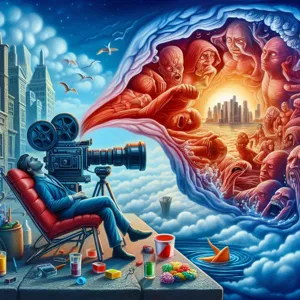
Film serves as a powerful mirror reflecting the complexities of society and culture, capturing the zeitgeist of its time in ways that resonate deeply with audiences. From the roaring twenties to the digital age, each era’s cinematic output reveals the values, struggles, and aspirations of its people, offering an intimate glimpse into their lives. Through character arcs, plotlines, and even the aesthetic choices of cinematography, filmmakers weave narratives that not only entertain but also provoke thought and discussion about social norms, issues, and advancements.
Consider the impact of films like “The Graduate,” which captured the disillusionment of a generation grappling with societal expectations in the 1960s, or “Do the Right Thing,” which boldly tackled racial tensions and urban strife in America. These films don’t simply entertain; they challenge viewers to confront uncomfortable truths about their own realities and the world around them.
Moreover, as cultural landscapes evolve, so do the stories we tell. The rise of diverse voices in filmmaking has led to a richer tapestry of narratives, amplifying underrepresented perspectives and allowing for a more inclusive examination of human experience. Films such as “Black Panther,” “Moonlight,” and “Parasite” not only entertain but also spark conversations about identity, representation, and power dynamics within society.
In essence, film acts as both a reflection and a catalyst, shaping how we perceive our world while also influencing the very culture it depicts. As audiences engage with these narratives, they find themselves not just passive observers but active participants in the ongoing dialogue about what it means to be human in a complex and ever-changing society.
4. The Role of Cinematic Techniques in Influencing Perception
Cinematic techniques play a pivotal role in shaping how we perceive the world through film, wielding the power to manipulate emotions, create atmospheres, and convey complex narratives. From the moment the camera rolls, filmmakers use a variety of tools to guide audience reactions and interpretations, transforming mere images into compelling stories that resonate on a deeper level.
One of the most fundamental techniques is **lighting**, which can dramatically alter the mood of a scene. A dimly lit room can evoke feelings of suspense or intimacy, while bright, high-key lighting may elicit joy or clarity. Take, for example, the haunting shadows in film noir—these not only enhance the tension but also reflect the moral ambiguity of the characters, immersing viewers in a world where danger lurks in every corner.
**Camera angles and composition** further influence how we perceive characters and their environments. A low-angle shot can make a character appear powerful and dominant, while a high-angle shot may render them vulnerable and small. This manipulation of perspective invites viewers to align emotionally with the characters, fostering empathy or disdain based on the visual cues provided.
**Editing techniques**, such as pacing and transitions, also play a crucial role in shaping our understanding of time and urgency within a narrative. Quick cuts during an action sequence can heighten adrenaline and excitement, whereas slow, lingering shots can create a sense of reflection or sadness. These choices are not merely artistic; they guide the audience through the psychological landscape of the film, amplifying the intended emotional response.
Moreover, the use of **color** in film can subconsciously influence our emotions. Directors like Wes Anderson are known for their distinct color palettes that evoke specific feelings—pastels may suggest nostalgia, while bold, saturated hues can create a sense of vibrancy or chaos. Each choice in color communicates a layer of meaning, inviting viewers to experience the story in a way that transcends words.
In essence, cinematic techniques are not just tools for storytelling; they are vital elements that shape our perception of reality. By crafting a seamless blend of visual and auditory experiences, filmmakers can transport us into worlds that feel both familiar and surreal, challenging our understanding of truth and fiction. As we watch, we don’t just observe; we engage, analyze, and ultimately reshape our perceptions of the reality presented before us.
5. Case Study: Iconic Films that Changed Public Opinion
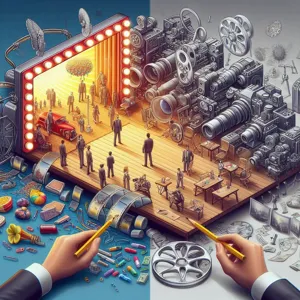
Throughout cinematic history, certain films have emerged as powerful catalysts for change, shaping public opinion and challenging societal norms. These iconic films not only entertain but also educate, provoke thought, and inspire action. In this section, we will explore a few standout examples that have left indelible marks on the cultural landscape.
One such film is *To Kill a Mockingbird* (1962), an adaptation of Harper Lee’s Pulitzer Prize-winning novel. Set in the racially charged atmosphere of the American South during the 1930s, the film centers around Atticus Finch, a lawyer who defends a black man wrongfully accused of raping a white woman. Through its poignant storytelling and powerful performances, the film brought issues of racial injustice to mainstream audiences, igniting conversations about civil rights long before the movement gained momentum in the 1960s.
Another landmark film, *Philadelphia* (1993), is credited with shifting perceptions around the AIDS crisis and the LGBTQ+ community. Featuring Tom Hanks as Andrew Beckett, a lawyer fired from his firm due to his HIV-positive status, the film humanizes the struggles faced by those living with the virus. By showcasing the personal and societal challenges of discrimination, *Philadelphia* played a crucial role in fostering empathy and understanding during a time of widespread stigma and fear.
In more recent years, *Black Panther* (2018) broke boundaries not just as a superhero film, but as a cultural phenomenon that celebrated African heritage and representation. With its predominantly black cast and crew, the film redefined the superhero genre and challenged Hollywood’s historical portrayal of black characters. Its success resonated deeply with audiences, igniting discussions about representation, empowerment, and the importance of diverse narratives in the film industry.
These films, among many others, serve as poignant reminders of cinema’s unique ability to reflect societal issues, influence public opinion, and inspire change. By examining the impact of these iconic films, we can better understand how storytelling through the lens of film can shape our perceptions of reality, highlighting the profound connection between art and social consciousness.
6. The Influence of Genre on Our Understanding of Reality
The influence of genre on our understanding of reality is a fascinating aspect of film that shapes not only our entertainment preferences but also our perceptions of the world around us. Each genre carries its own conventions, themes, and emotional resonances, inviting audiences to engage with reality through different lenses. From the gritty realism of dramas to the fantastical escapism of science fiction, the genres we gravitate towards can significantly color our worldview.
Take, for example, the impact of horror films. These narratives often tap into our primal fears, embedding unsettling ideas about danger and the unknown in our consciousness. They can reflect societal anxieties, such as the fear of the dark, the other, or even the disintegration of the family unit. As we watch characters confront terrifying situations, we not only experience adrenaline-fueled thrills but also find ourselves contemplating deeper issues of morality and survival, ultimately reshaping our understanding of fear in the real world.
Conversely, comedies provide a different lens. They often exaggerate everyday situations, highlighting the absurdity of life and allowing us to laugh at the very things that stress us out. This genre encourages us to take a lighter view of our own experiences, thus shifting our perspective on challenging circumstances. In light moments of humor, we may discover new ways to cope with reality and a sense of shared experience that can foster community and connection.
Moreover, genres like fantasy and science fiction challenge our perceptions by introducing us to worlds beyond our own, prompting us to question what is possible. These films invite audiences to expand their imaginations and consider alternative realities, often leading to discussions about technology, ethics, and the future of humanity. Through these narratives, we not only escape the limitations of our own reality but also inspire innovative thoughts about the world we inhabit.
In summary, the genre of a film provides more than just entertainment; it serves as a powerful framework through which we interpret and understand our reality. Whether it makes us question our fears, laugh at our flaws, or dream of the impossible, each genre plays a crucial role in shaping our perceptions and influencing how we engage with the world. Understanding this interplay can deepen our appreciation for film as a medium that not only reflects reality but also molds it in profound ways.
7. Stereotypes and Representation: How Film Affects Identity
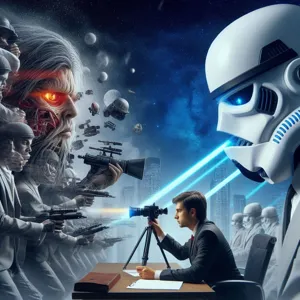
Film has always been a powerful medium for storytelling, but its influence extends far beyond entertainment. It shapes our understanding of culture, society, and ourselves. Stereotypes and representation in cinema play a crucial role in constructing and perpetuating identities, both on-screen and in the minds of audiences.
When we watch a film, we often see characters that reflect societal norms and expectations. These films can reinforce stereotypes—oversimplified and generalized views of a group. For instance, the portrayal of certain ethnicities, gender roles, or social classes can lead audiences to form biased perceptions about those groups. A film that consistently depicts a specific culture as violent or backward can inadvertently shape public opinion, leading to misconceptions that linger long after the credits roll.
Conversely, positive representation can empower and inspire. Films that showcase diverse narratives and complex characters allow audiences to see themselves reflected in meaningful ways. By presenting multifaceted stories that celebrate individuality, filmmakers can challenge preconceived notions and foster a deeper understanding of different identities. For example, a film featuring a strong, diverse female lead can inspire women and girls, showing them that their stories and experiences are valid and worthy of being told.
Moreover, the impact of representation is not limited to on-screen portrayals; it extends to the behind-the-scenes dynamics as well. The inclusion of diverse voices in writing, directing, and producing ensures that stories are told authentically and resonate with the lived experiences of different communities. When filmmakers prioritize diversity in storytelling, they not only enrich the cinematic landscape but also contribute to broader societal conversations about identity, belonging, and acceptance.
As audiences, we must engage critically with the films we consume, recognizing the power they hold in shaping our perceptions of reality. By supporting films that challenge stereotypes and promote positive representation, we can contribute to a more inclusive and understanding society, one where every voice has a place in the narrative tapestry of cinema. The films we watch can either reinforce harmful stereotypes or inspire change; the choice lies in the stories we choose to tell and celebrate.
8. The Impact of Documentary Filmmaking on Awareness and Understanding
Documentary filmmaking holds a unique power to shape our perception of reality by presenting real-life stories, events, and issues with an authenticity that can resonate deeply with audiences. Unlike fictional films, documentaries offer a lens into the complexities of the world, often illuminating topics that might otherwise remain in the shadows of public consciousness. Through interviews, archival footage, and a compelling narrative structure, these films have the ability to educate viewers, challenge preconceived notions, and provoke thought.
Consider the impact of documentaries like “Blackfish,” which brought to light the ethical concerns surrounding captive orcas, or “13th,” which explored the intricacies of race and the criminal justice system in the United States. Both films not only informed audiences but also sparked conversations and movements for change. They encourage viewers to confront uncomfortable truths and consider their own roles within larger societal frameworks.
Moreover, documentary filmmakers often spotlight marginalized voices, giving them a platform that traditional media may overlook. By sharing personal stories and lived experiences, documentaries foster empathy and understanding, allowing audiences to connect with people and cultures far removed from their own. This emotional engagement can lead to increased awareness and activism, as viewers feel compelled to respond to the issues presented on screen.
In an age of information overload, documentaries serve as a critical tool for distilling complex subjects into digestible narratives. They challenge us to question the status quo, explore diverse perspectives, and ultimately reshape our understanding of the world around us. As we watch and reflect, we are reminded of the profound impact that storytelling—especially in its documentary form—can have on our collective consciousness and our ability to enact change.
9. How Film Can Distort Reality: A Look at Fiction vs. Non-Fiction
Film possesses a unique ability to shape our understanding of reality, often blurring the lines between truth and fiction. While documentaries strive for authenticity, employing real footage and interviews to present factual narratives, fictional films weave intricate tales that can sometimes feel just as real, if not more so. This duality invites viewers to question what they see on screen and how it aligns with their own experiences.
Take, for instance, a gripping biopic that dramatizes the life of a historical figure. The film may emphasize certain events or introduce fictionalized dialogues to enhance emotional impact, leading audiences to believe they are witnessing an accurate portrayal. However, the artistic liberties taken by filmmakers can distort the reality of the subject’s life, shaping public perception in ways that may not reflect the truth. As viewers, we often accept these cinematic interpretations as fact, allowing them to influence our understanding of history and culture.
Conversely, documentaries aim to present reality as it is, yet they too can manipulate perception through editing, selective storytelling, and the director’s lens. A documentary filmmaker’s choices about what to include and how to frame their narrative can sway audiences, highlighting specific aspects while overshadowing others. The result is a crafted representation of reality that may resonate deeply but remains subjective.
Understanding this interplay between fiction and non-fiction in film is crucial. It reminds us of the medium’s power—not just to entertain, but to mold our perceptions and beliefs. As we engage with films, we should remain discerning viewers, questioning the narratives presented to us and recognizing the potential for distortion in both the fictional and the documentary realms. In doing so, we can appreciate the artistry of film while critically examining its impact on our understanding of reality.
10. The Role of Film in Shaping Historical Narratives
Film has an extraordinary power to shape our understanding of historical events, often serving as the lens through which we interpret the past. Whether dramatizing pivotal moments or offering nuanced portrayals of lesser-known figures, films can create compelling narratives that influence public perception and memory.
Consider the impact of iconic films like “Schindler’s List,” which brought the horrors of the Holocaust to a global audience, or “12 Years a Slave,” which recontextualized the slave narrative for modern viewers. These films not only inform us about historical facts but also evoke emotional responses, allowing audiences to connect with the characters and their stories on a personal level.
However, the portrayal of history in film is not without its controversies. creative liberties taken by filmmakers can distort facts, leading to an oversimplified or even skewed understanding of complex events. This phenomenon raises critical questions about the responsibility of filmmakers in representing history accurately while still crafting an engaging narrative.
Additionally, films can serve as cultural touchstones, reflecting the values, beliefs, and social issues of the time in which they were made. For example, the depiction of World War II in films from the 1950s often celebrated heroism and patriotism, while more contemporary works might delve into the moral ambiguities of war, showcasing the psychological toll it takes on soldiers and civilians alike.
As audiences engage with these historical narratives, they are prompted to reflect on their own beliefs and perspectives, making film a powerful medium for not only entertainment but also education and dialogue. Ultimately, the role of film in shaping historical narratives is a double-edged sword—capable of both enlightening and misleading, yet undeniably influential in our collective understanding of the past.
11. Viewer Interpretation: The Subjective Nature of Film Perception
Film is a powerful medium that transcends mere storytelling; it invites viewers into a complex dance of interpretation, emotions, and personal reflection. Each frame, each dialogue, and each score works in tandem to create a tapestry of meaning that varies dramatically from one viewer to another. This subjective nature of film perception lies at the heart of how we engage with cinema, shaping not only our understanding of the narrative but also our broader worldview.
Consider how different individuals might respond to the same film. One viewer may find solace in a character’s struggle, relating their journey to personal experiences, while another might critique the film’s portrayal of societal issues, sparking a discussion on representation and ethics. This divergence is not merely a reflection of taste; it is a testament to the rich, multifaceted experiences that films elicit. Factors such as cultural background, personal history, and even current life circumstances heavily influence how we interpret what we see on screen.
For instance, a romantic film may evoke feelings of nostalgia and longing in someone who cherishes past relationships, while another may view it as a cliché, disconnected from their own experiences. The use of imagery, symbolism, and cinematography serves as a canvas upon which viewers paint their interpretations, often leading to layered discussions that extend far beyond the film itself.
Furthermore, filmmakers are acutely aware of this subjective nature and often employ techniques designed to provoke specific reactions. Subtle visual cues, ambiguous endings, and complex character arcs are crafted to engage viewers on multiple levels. This artistic intent invites audiences to delve deeper, to question, and to connect personally with the narrative.
Ultimately, the beauty of film lies in its ability to reflect our realities while simultaneously reshaping them. It serves not only as a mirror but also as a lens through which we can explore our perceptions, challenge our biases, and deepen our understanding of the diverse tapestry of human experience. As we watch, we become part of a dialogue that transcends the screen, reminding us that every interpretation is valid, and every perspective enriches the collective narrative.
12. The Evolution of Filmmaking and Its Impact on Reality Perception
The evolution of filmmaking has been nothing short of revolutionary, profoundly influencing how we perceive reality. From the silent films of the early 20th century to the high-definition blockbusters of today, each technological advancement has not only transformed the art of storytelling but also reshaped our collective consciousness.
In the early days of cinema, filmmakers relied on simple techniques, focusing on narrative and emotion, often drawing inspiration from theatre. Silent films, with their exaggerated expressions and intertitles, crafted a unique reality where viewers filled in the gaps with their imagination. The advent of sound in the late 1920s marked a significant turning point, allowing for richer storytelling and the introduction of dialogue that grounded characters in their narratives, making their experiences more relatable.
As technology advanced, so did the visual language of film. The introduction of color in the 1930s brought vibrancy and depth to cinematic storytelling, further bridging the gap between the viewer’s world and the fictional realities on screen. With each innovation—be it the move to widescreen formats, the use of special effects, or the rise of computer-generated imagery (CGI)—filmmakers have continually expanded the boundaries of what is visually possible, inviting audiences to immerse themselves in constructed worlds that feel increasingly real.
Moreover, the emergence of digital filmmaking has democratized the medium, allowing more voices and perspectives to be represented. Independent filmmakers can now create compelling narratives that challenge mainstream perceptions, highlighting underrepresented stories that resonate with diverse audiences. This shift has encouraged viewers to question the realities presented to them, fostering a more critical understanding of the world around them.
As films continue to evolve with cutting-edge technologies like virtual reality and augmented reality, our perception of reality becomes even more complex. These immersive experiences blur the lines between the real and the fictional, prompting us to reconsider what we accept as truth. In this way, the evolution of filmmaking does not just reflect our reality; it actively shapes and reshapes it, offering new lenses through which we can understand our lives and the world we inhabit.
Ultimately, the relationship between film and reality is a dynamic interplay, where each influences the other in profound ways. As we navigate the ever-changing landscape of cinema, we must remain aware of its power to shape our perceptions, challenge our beliefs, and inspire us to see beyond the surface of our everyday experiences.
13. The Future of Film: Virtual Reality and New Media
As we stand on the brink of a new era in visual storytelling, the future of film is teetering on the edge of a technological revolution. Virtual reality (VR) and new media platforms are reshaping the very fabric of how we experience narratives, inviting audiences to step beyond the confines of the traditional screen and immerse themselves in dynamic, interactive worlds. Gone are the days when viewers were mere spectators; today, they can become participants in the story, forging unique emotional connections with characters and settings.
Imagine donning a VR headset and finding yourself in the middle of a bustling marketplace in a distant land, or standing side by side with a hero as they face insurmountable odds. This level of engagement transforms the passive act of watching into an active exploration of narrative landscapes, where choices can have real consequences. Filmmakers are now experimenting with non-linear storytelling, allowing audiences to dictate the flow of the narrative, leading to a more personalized experience that resonates on a deeper level.
Moreover, new media platforms, such as streaming services and social media channels, are democratizing film production and distribution, enabling diverse voices and stories to emerge. Independent filmmakers are leveraging these tools to reach global audiences, challenging traditional narratives and exploring themes that reflect the complexities of modern life. This shift not only broadens the spectrum of stories being told but also encourages a more inclusive representation of cultures and experiences.
As we explore these advancements, it becomes evident that the future of film is not just about technological innovation but also about redefining our relationship with storytelling. The boundaries between creator and consumer are blurring, as audiences become co-creators in the cinematic journey. In this exciting landscape, the potential for film to shape our perception of reality is boundless, opening doors to new dimensions of empathy, understanding, and shared experience. The possibilities are endless, and as we embrace these changes, we may find ourselves not just spectators of film, but active participants in the narratives that define our world.
14. Conclusion: The Responsibility of Filmmakers in Shaping Reality
In conclusion, the influence of film on our perception of reality is profound and multifaceted. Filmmakers wield a significant power—not only to entertain but also to inform, challenge, and reshape societal norms and beliefs. With every frame, they craft narratives that can illuminate truths, provoke critical thought, and inspire change. However, with this power comes immense responsibility.
As creators, filmmakers must be acutely aware of the messages they convey and the potential impact on their audiences. The stories they tell can reinforce stereotypes, perpetuate misinformation, or even inspire movements for justice and equality. In an age where information is consumed rapidly and often without critical analysis, the authenticity and integrity of a filmmaker’s vision are paramount.
Moreover, filmmakers should strive to represent diverse voices and perspectives, enriching the tapestry of storytelling and fostering empathy among viewers. By carefully considering the implications of their work, filmmakers can contribute to a more inclusive and nuanced understanding of the world.
As we engage with films, it’s essential for us as an audience to approach them with a discerning eye and an open mind, recognizing that while film can reflect reality, it can also be a powerful tool for shaping it. Ultimately, the dialogue between filmmakers and their audiences is a dynamic one, with the potential to transform not just individual perceptions, but the collective consciousness of society as a whole.
15. Further Reading: Exploring Film Theory and Criticism
To deepen your understanding of how film shapes our perception of reality, delving into film theory and criticism can be an enlightening journey. This field is rich with diverse perspectives and methodologies that dissect the myriad ways cinema influences our worldview.
Start with foundational texts such as “Film Theory: An Introduction” by Robin Wood, which provides a comprehensive overview of various theoretical frameworks, including formalism, realism, and psychoanalysis. Wood’s insights help unravel the complex relationship between narrative structure and audience reception, allowing you to appreciate how filmmakers manipulate visual and auditory elements to convey deeper meanings.
Another essential read is “The Visual Culture Reader,” edited by Nicholas Mirzoeff. This anthology compiles essays that examine the intersection of film with broader cultural contexts, exploring how societal values and historical moments are reflected and refracted through the lens of cinema. It encourages readers to think critically about the implications of visual storytelling and its role in shaping cultural narratives.
For a more contemporary approach, consider “The Language of New Media” by Lev Manovich. This book explores the evolution of film in the digital age, discussing how new technologies and platforms are transforming our engagement with visual media. Manovich’s arguments prompt a reevaluation of traditional cinematic techniques in the context of contemporary storytelling, highlighting the shifting boundaries between film, television, and interactive media.
Finally, immerse yourself in online resources such as the “Film Studies for Free” blog, which curates a wealth of academic articles, video essays, and lectures that democratize access to film scholarship. Engaging with these materials will not only enhance your critical viewing skills but also foster a deeper appreciation for the artistry and complexity of film as a medium.
By exploring these avenues, you will cultivate a richer understanding of how film not only entertains but also shapes our perceptions of reality, prompting us to question the narratives we consume and the world around us. Happy reading!
In conclusion, our exploration of how film shapes our perception of reality reveals the profound impact that storytelling on screen can have on our understanding of the world around us. From the artistry of cinematography to the intricacies of narrative, films not only entertain but also challenge our beliefs, evoke empathy, and provoke thought. As we continue to engage with diverse cinematic voices and perspectives, we gain a richer appreciation for the complexities of human experience. So, the next time you settle in for a movie night, remember that you’re not just watching a story unfold; you’re participating in a powerful dialogue that reflects and influences our collective reality. Let the lens of film open your eyes to new horizons, and inspire you to see the world—both on and off the screen—in a whole new light.





